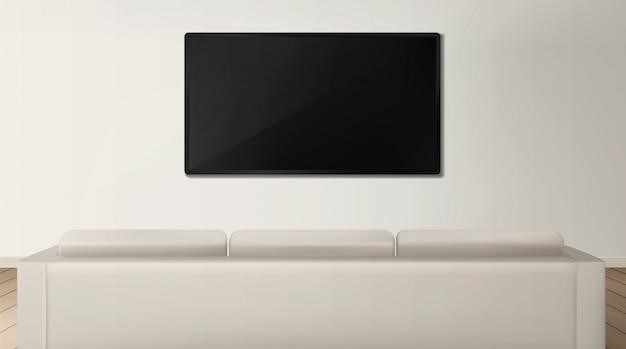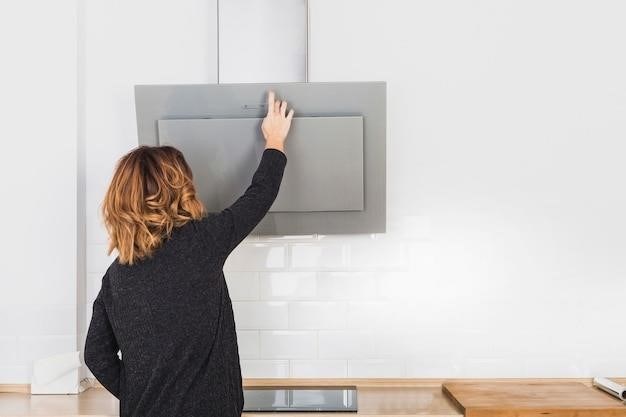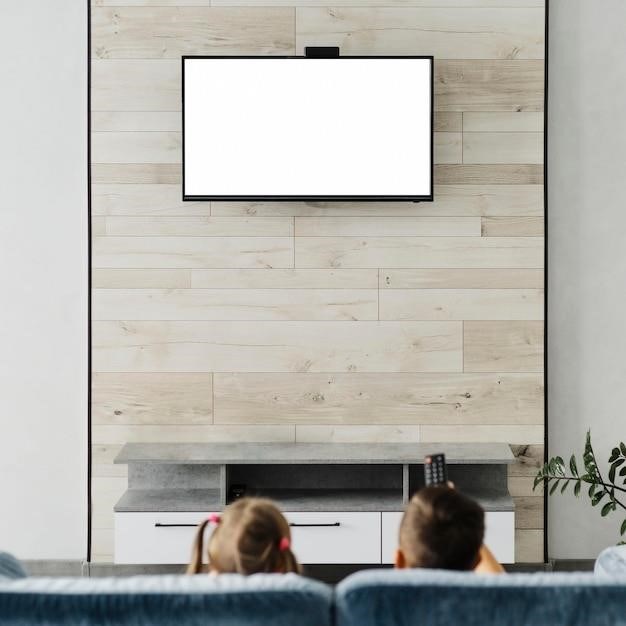perlesmith tv wall mount instructions

Perlesmith TV Wall Mount⁚ A Comprehensive Installation Guide
This guide provides a step-by-step walkthrough for installing your Perlesmith TV wall mount. Before you begin, ensure your TV’s weight and VESA compatibility align with the mount’s specifications. Consult the included instructions and diagrams for detailed information on compatible TV sizes and weight limits. Always prioritize safety and seek professional help if needed.
Understanding Compatibility
Before initiating the Perlesmith TV wall mount installation, verifying compatibility is crucial. Check your television’s VESA mounting hole pattern. This is usually a rectangular pattern of holes on the back of your TV. The Perlesmith mount has specific VESA compatibility limits; exceeding these limits renders the mount unsuitable. Consult your TV’s manual or specifications to find its VESA dimensions (e.g., 400x400mm, 600x400mm). Compare these dimensions to the Perlesmith mount’s specified range. Furthermore, ensure your TV’s weight does not surpass the maximum weight capacity stated in the Perlesmith mount’s instructions. Exceeding either the VESA or weight limits can lead to instability, damage, or injury. If your TV falls outside the compatible range, contact Perlesmith customer support for assistance in finding a suitable alternative mount. Improper compatibility checks can result in a failed installation or even damage to your equipment.
VESA Compatibility and TV Weight Limits
Understanding VESA compatibility and weight limits is paramount for a successful Perlesmith TV mount installation. VESA (Video Electronics Standards Association) refers to the standardized hole pattern on the back of your television designed for mounting. Your Perlesmith mount’s instructions will specify a range of compatible VESA patterns (e.g., 200x100mm to 600x400mm). Carefully measure the distance between the mounting holes on your TV to ensure they fall within this specified range. Using an incompatible VESA pattern will prevent secure attachment and may cause damage. Equally important is the TV’s weight. The Perlesmith mount’s documentation will clearly state its maximum weight capacity (e.g., 77 lbs, 115 lbs, or 132 lbs). Never exceed this limit; doing so risks structural failure, potentially leading to your TV falling and causing damage or injury. Always double-check both the VESA pattern and weight before proceeding with installation. If uncertain, consult Perlesmith’s customer support for clarification.
Wall Type and Stud Finder Usage

The type of wall you’re mounting your Perlesmith TV mount to significantly impacts the installation process and required hardware. Most Perlesmith mounts are designed for installation on walls with wooden studs, providing the necessary structural support for the weight of your television. Installing on drywall alone is generally not recommended due to its insufficient strength. Before commencing, use a stud finder (not typically included with the mount) to locate wall studs. Accurately identifying stud locations is crucial to ensure secure and safe mounting. Mark the stud locations clearly on the wall using a pencil; The instructions will often specify the required spacing between studs for optimal support. If your wall lacks sufficient studs or consists of materials other than wood (e.g., concrete, brick), you may need specialized wall anchors or consult a professional installer to determine the appropriate mounting method. Failure to properly identify and utilize wall studs could result in instability and potential damage or injury.
Tools and Materials Required
Before starting your Perlesmith TV mount installation, gather all necessary tools and materials. This will ensure a smooth and efficient process. The specific tools and hardware may vary depending on your Perlesmith model, so always refer to your model’s specific instruction manual for the exact list. However, you will generally need a stud finder to locate wall studs accurately; a tape measure for precise measurements during the installation process; a pencil to mark the mounting locations on the wall; and a drill with the appropriate drill bits to create pilot holes for the mounting screws. You’ll also need a level to ensure the wall plate is perfectly horizontal before tightening the screws. The provided hardware kit usually includes lag bolts, washers, and possibly anchors depending on your wall type. A screwdriver, preferably both Phillips head and possibly an Allen wrench (depending on the mount), will be necessary to fasten the various components. Having all these tools readily available prevents interruptions during the installation and makes the process safer and more efficient. Remember to always prioritize safety and use caution when operating power tools.
Step-by-Step Installation⁚ Wall Plate Mounting

Precisely locate wall studs using a reliable stud finder and mark their positions on the wall with a pencil. This is crucial for secure mounting. Carefully position the wall plate at your desired height, ensuring it’s level using a level tool. Double-check the level before proceeding to avoid tilting issues later. Use the wall plate itself to mark the exact pilot hole locations on the wall, ensuring accuracy. Using a drill with the correct drill bit size, create pilot holes at the marked positions. The depth of these holes should be appropriate for the lag bolts you’ll be using; check your Perlesmith instructions for specifics. Insert lag bolts, washers, and anchors (if necessary) into the pilot holes. Securely attach the wall plate to the wall studs by carefully tightening the lag bolts. Ensure the wall plate is firmly attached to the wall before moving to the next step in the assembly process. Avoid over-tightening, which could damage the wall or the wall plate. A correctly installed wall plate provides the essential foundation for a secure and stable TV mount. Improper installation could lead to instability or damage, so take your time with this crucial step.
Step-by-Step Installation⁚ Arm Assembly
Before commencing arm assembly, carefully review the provided diagrams and instructions specific to your Perlesmith model. Identify all the components of the arm assembly, ensuring no parts are missing or damaged. If any parts are missing or damaged, contact Perlesmith customer support immediately before proceeding. Begin by attaching the arm extensions to the wall plate. Align the extensions correctly with the designated slots or holes on the wall plate. Use the provided screws and washers to securely fasten the extensions to the wall plate, ensuring they are tightly secured. Do not overtighten, as this may damage the components. Next, carefully attach the arm assembly to the extensions. Follow the instructions for correct orientation and alignment. Use the supplied screws, washers, and possibly spacers to firmly attach the arm to the extensions. Again, avoid overtightening. Once the arm is securely fastened, carefully check for any loose parts or wobbles. Address any such issues before proceeding to the next step. A properly assembled arm ensures smooth and stable movement of your TV. Take your time to ensure each connection is tight and secure.
Step-by-Step Installation⁚ TV Mounting
With the arm assembly securely attached to the wall plate, carefully prepare your television for mounting. Before lifting your TV, have a helper assist you, as TVs can be heavy and awkward to handle alone. Locate the mounting points on the back of your TV; these points should correspond to your mount’s VESA compatibility. If there’s a mismatch, immediately stop and contact Perlesmith support; Gently attach the TV brackets to the mounting points on your television. Use the provided screws to secure the brackets firmly but avoid over-tightening. Ensure that all the screws are properly secured and that the brackets are aligned correctly with the mounting holes. Once the brackets are firmly attached, carefully lift the TV and align the brackets with the arm assembly. This step requires two people due to the weight of the TV. The brackets should effortlessly slide onto the arms. Use the provided screws to secure the TV brackets to the arms. Again, secure them firmly but avoid over-tightening. Once the TV is securely attached, double check for stability and proper alignment before adjusting the tilt and swivel functions.
Securing the TV and Cable Management
After mounting your TV, take extra steps to ensure its secure placement. Double-check all screws and connections to prevent accidental detachment. Tighten any loose screws, ensuring a firm grip without over-tightening, which could damage the mount or TV. For added stability, consider using additional wall anchors if your wall type requires them, especially for heavier TVs. This step is crucial for safety and prevents accidental damage. Next, focus on cable management; neatly organize all cables to prevent tangling and maintain a clean aesthetic. Use cable ties or clips to bundle the cables together, then route them along the mount’s arm or behind the TV for a tidy look. Avoid pulling on the cables excessively to prevent damage or disconnection. Consider using cable management solutions to further organize and conceal wires. If there are any exposed wires, tuck them away or use cable concealers to prevent them from being seen. A well-organized cable setup enhances the look of your entertainment center and reduces the risk of accidental damage to the cables. By diligently securing your TV and managing your cables, you ensure both the safety and appearance of your home theater setup.
Troubleshooting Common Issues
If your Perlesmith TV mount isn’t functioning correctly, several troubleshooting steps can help. Firstly, check for loose screws or connections. Carefully inspect all screws and bolts, ensuring they are tightened securely but not over-tightened. Loose connections are a common cause of tilting, instability, or movement. If the TV is tilting, verify the levelness of the wall plate; use a level to ensure it’s perfectly horizontal before attaching the TV. Uneven mounting can lead to tilting and instability. If the TV won’t swivel or tilt as expected, examine the mechanical parts of the mount; ensure nothing is obstructing the movement. Check for any bent or damaged components that might be hindering movement. Should the issue persist, refer to your Perlesmith user manual for specific troubleshooting steps related to your model. If the problem continues, contact Perlesmith’s customer support. They can provide additional assistance, possibly suggest alternative solutions, or guide you through more advanced troubleshooting steps. Remember to provide your model number for faster and more accurate assistance. Before contacting support, gather all relevant information, such as the model number and detailed descriptions of the issues you are experiencing. This will streamline the troubleshooting process and help you resolve the issue efficiently.
Tilt and Level Adjustments
Achieving the perfect viewing angle with your Perlesmith TV mount involves precise tilt and level adjustments. Begin by ensuring the wall plate is securely and levelly mounted; use a level to confirm its horizontal alignment. Slight imperfections in wall plate placement can significantly impact the final level and tilt of your TV. Once the wall plate is level, carefully attach your TV, ensuring all connections are secure. Many Perlesmith mounts offer tilt adjustment mechanisms; these often involve levers or screws that control the vertical angle of the TV. Locate these mechanisms and gently adjust them to find your preferred viewing angle. Be cautious not to over-tighten any screws or levers, as this could damage the mount or affect its smooth operation. Small incremental adjustments are usually sufficient. Some Perlesmith models provide fine-tuning level adjustments; these are typically screws or knobs that allow for minor horizontal adjustments. Use these adjustments to perfectly align your TV. Remember to tighten all screws and levers securely after making adjustments to prevent shifting and maintain a stable viewing experience. If you encounter difficulties or are unsure about making adjustments, refer to your Perlesmith TV mount’s instruction manual. The manual provides detailed diagrams and step-by-step instructions for both tilt and level adjustments, ensuring a smooth and successful setup process.
Customer Support and Contact Information
Perlesmith offers various avenues for customer support to address any questions or issues regarding your TV wall mount. Their website, often including a comprehensive FAQ section, is a great starting point for troubleshooting common problems or finding answers to frequently asked questions. This online resource frequently features installation videos, diagrams, and detailed guides that can help resolve minor issues or clarify installation steps. If you cannot find the answer you need online, Perlesmith provides direct contact options. These typically include a customer service email address, often varying based on your region (e.g., supportusperlesmith.com for the US, supportcaperlesmith.com for Canada). Check your product packaging or the Perlesmith website for the most up-to-date contact information specific to your location. Additionally, a phone number may be listed for technical support, allowing you to speak with a representative. This phone number may have specific operating hours, which you should verify before calling. Remember to have your model number readily available when contacting support, as this helps representatives quickly identify your specific mount and provide tailored assistance. For warranty inquiries or other more complex issues, contacting customer service via email is generally recommended, as it allows for detailed explanation and provides a documented record of your interaction.
Warranty Information and Resources
Your Perlesmith TV wall mount comes with a warranty, the specifics of which are detailed in the documentation included with your purchase. This warranty typically covers manufacturing defects and ensures the product will function correctly under normal usage conditions for a specified period. Carefully review the warranty terms and conditions as they outline the duration of coverage, what is covered, and any exclusions. The warranty often specifies procedures for filing a claim should a defect arise, including providing proof of purchase and details of the issue. To access additional warranty information, visit the Perlesmith website. Their site usually has a dedicated support section with links to warranty documents, frequently asked questions, and potentially downloadable forms for warranty claims. Understanding your warranty is crucial for protecting your investment. Should you encounter problems within the warranty period, promptly contact Perlesmith’s customer service using the contact methods outlined in your documentation or on their website. Retain your proof of purchase and any other relevant documentation (such as photographs if applicable) to facilitate a smooth and efficient claims process. Remember, proactive maintenance and careful handling of your mount can help ensure it remains within the warranty’s operational parameters.
Leave a Reply
You must be logged in to post a comment.